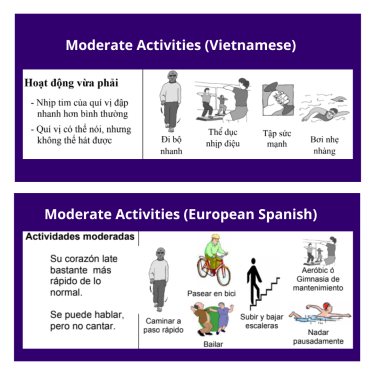April 18, 2024
Measuring Physical Activity: The global reach of the RAPA
The ability to swiftly gather reliable data can be the difference between breakthrough discoveries and stagnation. Enter the Rapid Assessment for Physical Activity (RAPA), a simple yet revolutionary tool that has been assisting researchers with physical activity measurement worldwide. With over 14,000 downloads and 14 translated versions, the RAPA helps researchers, students, and community-based organizations gather accurate data across the globe.
Developed by a team of HPRC researchers and published in 2006, the RAPA is an efficient and convenient tool for researchers to measure self-reported physical activity across aerobic, strength and flexibility domains. The tool was designed to be a short, self-administered, and easily scored questionnaire, and was developed using input from diverse populations including Latinx, Vietnamese, Chinese, and African American communities. The tool was tested among older adults (age 50+) and was validated against the Patient-centered Assessment and Counseling for Exercise (PACE), and the measure of activity used in the Behavioral Risk Factor Surveillance System (BRFSS).
Since its validation, the RAPA has offered researchers a user-friendly tool with easy-to-understand language. “All research hinges on your population understanding the questions you ask so you can get reliable data,” stated Kristen Hammerback, a research scientist who oversees the RAPA dissemination and use.
“There are some physical activity measurement tools that are so complicated, they’re difficult to use, even for researchers who live and breathe this world. The RAPA’s strength is that it is straightforward and written in real-people language.”
Kristen Hammerback

Aside from its simple language and short format, one of the most unique elements of the RAPA is its artwork. Each section of the tool includes depictions of several types of physical activity being done by diverse groups of older adults. Yael Yanich, HPRC’s administrative coordinator and the artist who created the images, stated, “My hope was that participants would be able to see themselves in the people and activities shown. As the RAPA has been translated into numerous languages, it has been adapted to mirror the lives of the older adult populations in other cultures by including activities such as dancing and caring for grandchildren.”
This artwork has been fundamental in helping diverse populations interact with and use the RAPA. Reflecting on its success, Hammerback shared an experience with a student researcher in India who was working with adults who had cognitive challenges. The student had used multiple types of physical measurement assessments with little luck. “Research participants were getting so frustrated with the measurement tools that they would literally cry,” said Hammerback. “The reason they were so upset was because trying to answer the questions made them feel stupid. But once the researcher began using the RAPA, it became clear that the problem was not with the participants, it was with the other tools.”
The RAPA’s simplicity and diverse artwork has fostered inclusion, understanding and empowerment in public health work worldwide. As testimonies of its transformative influence echo globally, the RAPA reaffirms the importance of accessibility and empathy in advancing scientific inquiry and improving lives. “This tool helps people because it allows researchers to reliably capture data,” stated Hammerback. “They can then disseminate their findings and build up a body of knowledge that both moves the discipline forward and improves people’s lives. And that is why public health researchers do the work we do.”
For information on use and translation contact Kristen Hammerback at khammerb@uw.edu